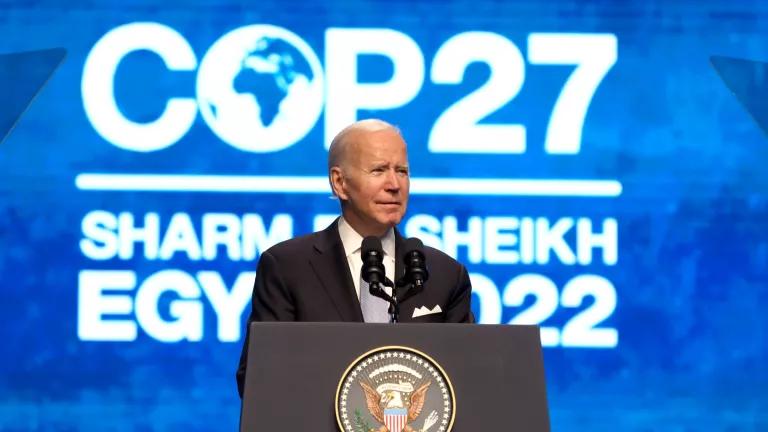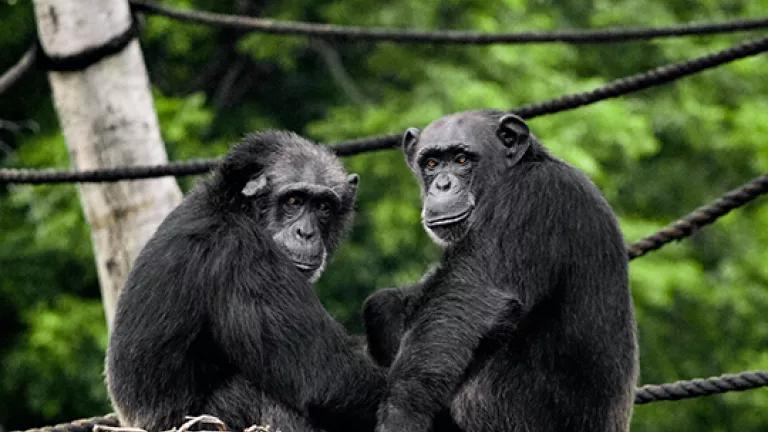Some of my colleagues here at NRDC have been passing around a new toy. It's a serious tool, actually, but it's kind of fun and exciting if you're the kind of person who's interested in solving climate change. It turns out that in addition to cutting carbon pollution from power plants, vehicles, and industry, another important tool in our climate solving kit is the food we choose to eat.
The new gadget is a global greenhouse gas calculator, developed by a multinational team of researchers. My colleagues haven't completely vetted it yet, so we can't officially endorse it, but the calculator is unusual because it's open source and relatively user-friendly, so anyone can play with it. The calculator has about 40 different "levers" you can push to bring down emissions, governing everything from improvements in building insulation to more wind energy to changes in meat consumption. You can also set how hard to push on each lever, ramping up from 1 to 4. It's a helpful tool for estimating the effects of a variety of climate solutions.
The team behind the calculator found multiple ways, using levers set no higher than 2 or 3, to keep global warming below the critical 2 degree Celsius (3.6 degrees F) threshold. (This is the point scientists have identified as key to avoiding the worst impacts of climate change.) Each of these reasonable pathways keep the world in the climate safety zone while ensuring that people have more creature comforts than ever--food, electricity, comfortable homes, and even more travel.
In short--as NRDC has been saying for the past 20 years--the world can cut climate pollution without plunging into the Dark Ages.
Power plants are America's biggest source of carbon pollution, and the EPA's Clean Power Plan is poised to reduce it. In addition to demonstrating the critical importance of clean energy strategies, the calculator also shows the impact of another climate solution that's less talked about: dietary choices.
Diets that focus on meat from ruminant animals, like cows, sheep and goats, are actually a major driver of climate pollution. Raising these grazing animals typically requires a lot of pasture land--land that might otherwise be forested, soaking up carbon from the air. Cows and other ruminant animals, with their multi-chambered digestive systems, also produce more methane emissions than pigs and poultry.
As an intellectual exercise, my colleagues in our food and agriculture program pushed the diet lever on the calculator all the way to 4, projecting that the world would eat about as much meat in total as the average Indian today, and would switch out red meat for more pork and poultry, as in the average Chinese diet today. Now, this is a drastic scenario, but the result was astonishing--this dramatic dietary shift could help keep the world safely below the 3.6 degree F threshold.
Of course, a more practical and realistic strategy would be to press several levers at once, not just diet. The United States and the world need to keep moving full speed ahead to clean up power plants, make cars, buildings and homes more efficient, and get more clean and renewable energy into the mix. But it is remarkable how powerfully personal food choices affect the world we all live in.
There is a growing awareness in the United States that a diet higher in plant-based foods is better for people and the planet. The U.S. Dietary Advisory Guidelines Committee recently recommended that Americans eat more plants and less meat, for reasons of personal health as well as for environmental protection.
Here at NRDC, we also know that how meat is produced can make a big difference for the environment. The industrial livestock farms that produce most of the meat consumed in this country are a major source of water pollution nationwide. Common practices on these farms, including waste handling and the misuse of antibiotics, are harmful to the land, air, and climate, and also contribute to the growing public health crisis of antibiotic resistance.
But farmers and ranchers around the country and globe show us every day that we can raise chickens, pigs and cows in ways that are healthier for people, animals and the planet. My colleagues work with farmers and ranchers to encourage techniques that protect public health and the environment, and push the government and major meat buyers to change policies that encourage risky farming.
Consumers also have a vital role to play in shifting to a more climate-friendly food system. Even small steps like eating plant-based meals one day a week can make a difference. This simple change frees up grocery dollars to buy healthier meats when you want to, and supports the producers who are creating an alternative to polluting factory farms. By eating less meat, and choosing meat produced with less environmental impacts when we do eat it, we protect the air, land, water and climate that sustain us all.


